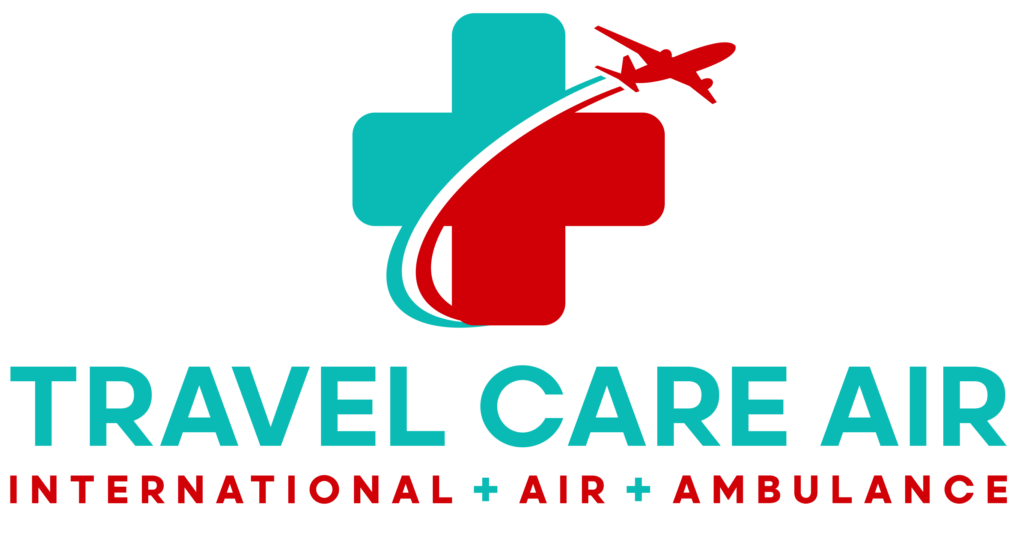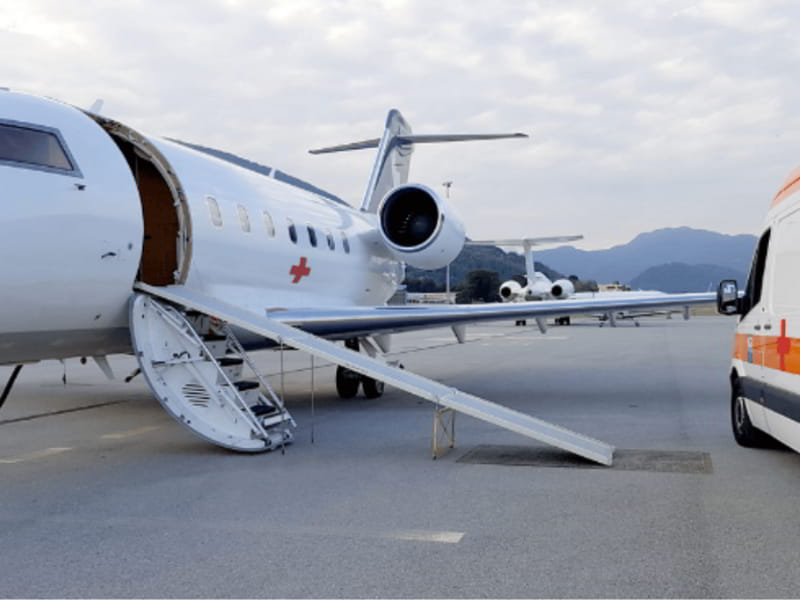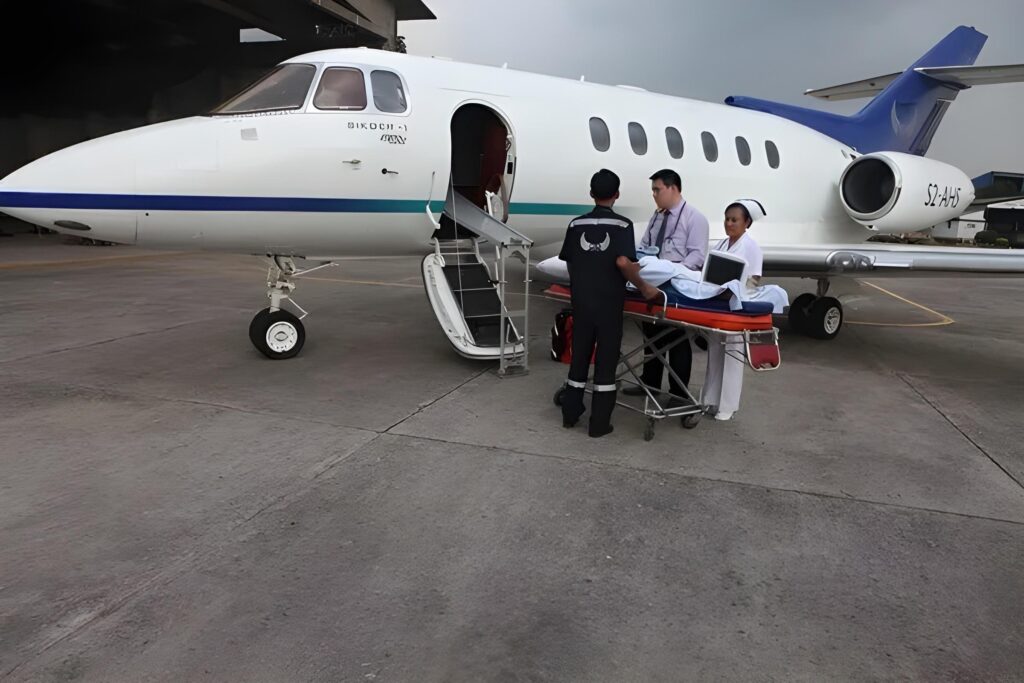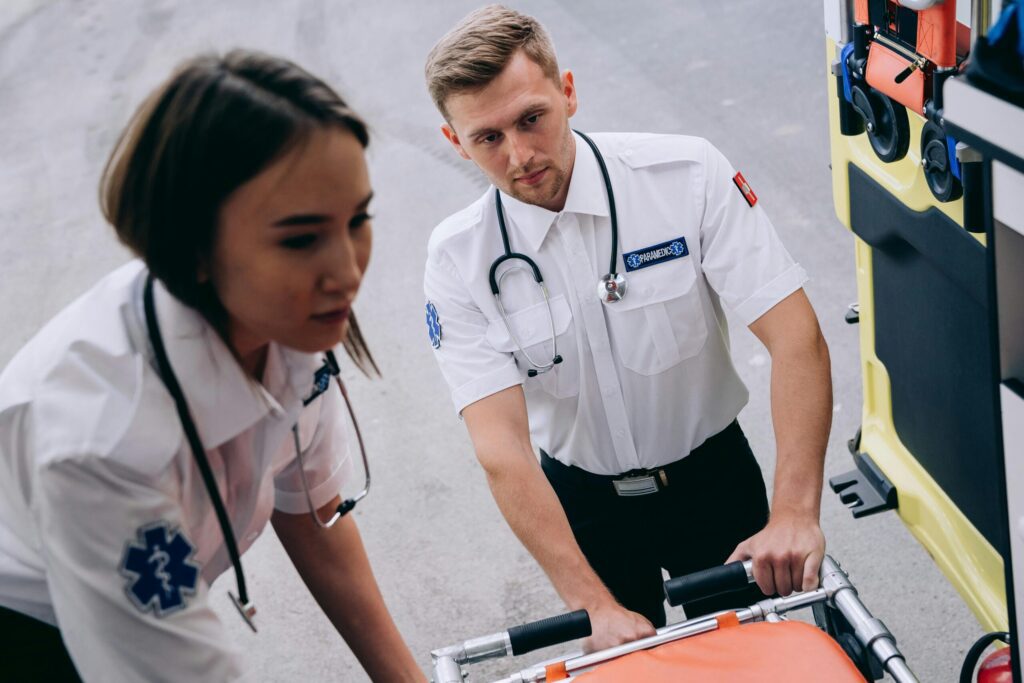You never expect to need a medical flight…until you do. For many families, the idea of being in a situation that calls for emergency transport feels like a very unlikely event, but it happens a lot more often than most people think, especially during a medical emergency while traveling. Whether it’s an accident, a sudden illness, or a planned transfer to receive specialized care, understanding all of the options that are available to you can make a difficult time feel less uncertain.
This guide was specifically created by the expert team at Travel Care Air to help answer the most common question that we get – how does air medical transport work? We are here to walk you through each step so that you know who’s involved, what you can expect, and how you can prepare.
Here’s what you’ll learn:
- How does air medical transport work from start to finish
- What to expect during a medical emergency while traveling
- The full air medical transport process, including coordination and care
- Clear answers to what is a medical flight and when it’s the right choice
- When medical repatriation applies and how it’s arranged
- What flight nurses and onboard teams do to keep patients safe
What Is a Medical Flight and When Is It Needed?
If you’re wondering what is a medical flight, we have the answer! It’s a specially equipped aircraft that is designed to transport patients who need medical attention during travel. These flights are staffed by trained medical crews and include advanced monitoring and life-support equipment.
People often ask how does air medical transport work in real-life situations. It starts with a clear need…like an accident on vacation, a serious illness that happens far from home, or the need to transfer someone to a specialized facility for more advanced care. Medical flights are used for both urgent emergencies and carefully planned trips.
Some of the most common examples that we see include things like an elderly parent who falls while traveling abroad or a patient being moved from a rural hospital to a trauma center. Another scenario is medical repatriation, which means bringing someone back to their home country for continued treatment or recovery.
No matter what the reason, medical flights are there to ensure that the care stays continuous and safe, even while you’re up in the sky.
The Complete Air Medical Transport Process From Start to Finish
Families often want to know exactly how does air medical transport work. Having a good understanding of the process is going to ease anxiety and help you feel more prepared. The air medical transport process is carefully designed to ensure patient safety and continuity of care from start to finish.
Here’s how it typically works:
- Initial Call and Medical Evaluation – It starts when you contact the provider. A medical team is going to review the patient’s condition and unique needs.
- Transport Coordination and Scheduling – The provider arranges the aircraft, crew, and hospital coordination, ensuring the right level of care for each patient’s specific requirements.
- Ground Transport to the Airfield – Patients are safely moved from the hospital or home to the waiting aircraft by specially trained ground crews.
- What Is Inside an Air Ambulance – These aircraft are specially equipped with advanced medical equipment, monitoring systems, and space designed for both patient comfort and proper clinical care.
- In-Flight Care and Communication – The medical crew provides continuous monitoring, treatment, and updates to the receiving facility.
- Arrival and Patient Hand-Off – After landing, the patient is transferred directly to the receiving facility, following strict patient air transfer protocols.
As you can see, every step is planned and executed with precision to provide seamless, safe care for your loved one.
The People Behind the Flight – Who’s on the Team?
One of the most reassuring parts of learning how does air medical transport work is understanding who’s on board to care for your loved one. Every flight is supported by a highly trained team who all have a shared goal…to provide safe, expert care from pickup to arrival.
The main crew usually includes a pilot, a flight paramedic, a flight nurse, and the ground-based logistics team. While the pilot focuses on navigation and safety in the air, the medical crew is in charge of handling patient care every step of the way.
The responsibilities of a flight nurse are diverse and span both clinical and emotional care. These professionals are responsible for monitoring vitals, managing medications, and are specially trained to make in-flight medical decisions if the patient’s condition changes. Just as importantly, they provide calm, compassionate reassurance to the patient and family throughout the entire journey.
Behind the scenes, the coordination team manages everything from the communication with the hospital to scheduling and confirming the ground transfers. This teamwork is what makes the air medical transport process so safe and reliable.
When you choose a provider, it’s important that you understand you’re not just booking a flight…you’re placing your trust in a full team of highly skilled professionals who know exactly what to do when every second counts.
What Families Should Expect Before, During, and After the Flight
Before the flight, families can expect some highly detailed coordination. You’ll be asked for medical records, insurance details, and travel documents. The medical team will assess the patient’s condition and confirm that air travel is the safest option for the patient. You’ll also receive updates and instructions, often from a dedicated case manager who is going to act as your main point of contact.
During the journey, the patient air transfer begins with ground transportation from the hospital or home directly to the aircraft. During the flight, care is continuous. The medical flight guide provided by your service team will outline what’s included, from oxygen to cardiac monitoring, and how the communication process with family will work throughout.
Once the flight ends, the receiving hospital or care facility is already prepared, thanks to specially coordinated handoff procedures. After-care usually includes medical updates, insurance processing, and support with billing.
We completely understand that this can be a lot to manage, especially during a stressful time. When you work with experienced teams like Travel Care Air, we help to simplify the entire experience and make sure that your family is cared for with the highest level of skill, compassion, and transparency every single step of the way.
A Safe Landing Starts with the Right Team
Understanding how does air medical transport work gives you the power to make confident, informed choices during a medical crisis. From coordinating ground crews to monitoring patient care during the flight, the air medical transport process is specifically created with safety, precision, and compassion as the main priorities.
When you’re choosing a provider, look for one that offers 24/7 communication, licensed medical teams, and full support for medical repatriation when needed. Ask about their experience, the equipment that they use, and whether family members can ride along.
Travel Care Air has spent more than 40 years helping families deal with urgent and difficult air ambulance needs. Our team is known for providing expert care with kindness, transparency, and professionalism every step of the way.
Let Travel Care Air take the weight off your shoulders. We are here with you from the first conversation until you reach your final destination, providing expert, 24/7 support and the highest level of care for both you and your loved one. Call us at 1-800-524-7633 or visit us online.
Frequently Asked Questions
How do medevac flights work?
Medevac flights are typically used in emergencies and operated by military or government agencies. They respond quickly to trauma or crisis situations, often with basic stabilization. In contrast, how does air medical transport work? It is usually pre-coordinated, private, and offers specialized in-flight medical care.
How much does it cost to fly in an air ambulance?
The cost depends on distance, urgency, type of aircraft, and level of care needed. Prices can range from $10,000 to $60,000 or more. If medical repatriation is involved, international flights are often more expensive due to logistics and coordination.
Who pays for an air ambulance?
Payment can come from private insurance, travel policies, workers’ compensation, or out-of-pocket. Some programs offer financial help for medical transport, and it’s always a good idea to check coverage and ask the provider about available options.
What is the difference between an air ambulance and a medevac?
A medevac usually refers to emergency evacuation during crisis events, often handled by the military or emergency services. An air ambulance is private and planned, focusing on medical monitoring, comfort, and safety during patient air transfer.
Why would you go in an air ambulance?
Patients use air ambulances when they need medical monitoring during travel, fast access to specialized care, or relocation after a medical emergency while traveling. It is also used for transferring patients with chronic conditions or serious injuries.
How does an air ambulance work?
An air ambulance is like a flying ICU. It includes medical equipment, trained staff, and space to safely care for the patient mid-flight. The air medical transport process includes coordination, ground transfer, in-flight care, and hospital hand-off.
What is the difference between an ambulance and an air ambulance?
A ground ambulance handles local emergencies, while an air ambulance travels longer distances, often across states or countries. It offers advanced life support, flight crews, and a faster response for critical patients during long-range patient air transfer.



